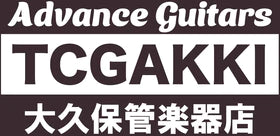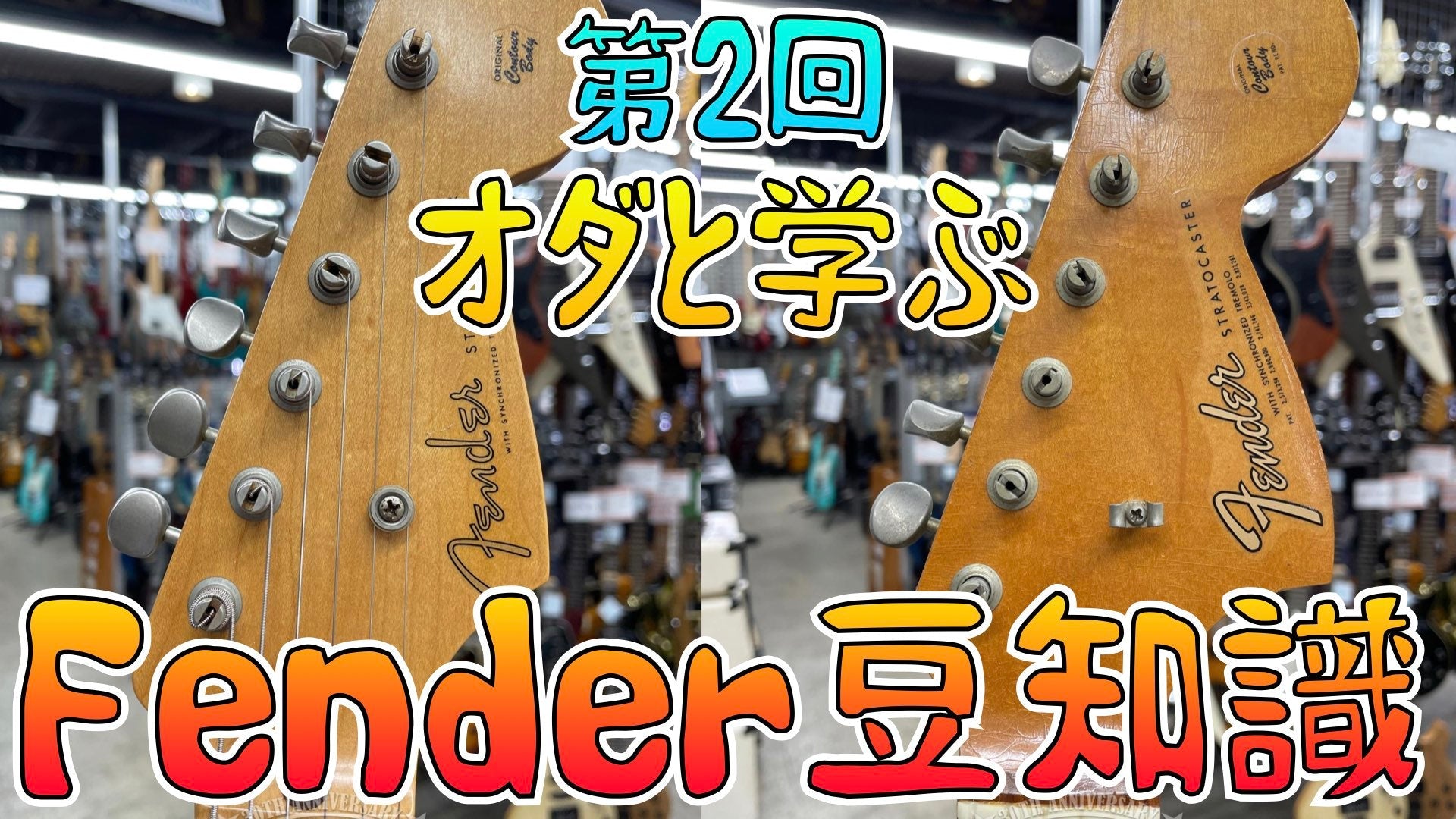OdaThe following is a summary of the Fender Trivia!
I have been uploading trivia about electric guitars on X (Twitter),
I will write more detailed tidbits in this update since I can only tell you in a limited number of characters on X!
I'm not saying it will make you a better guitarist or anything, but I'd be happy if you just think "huh?
(But knowing more about guitar = liking guitar more = practicing guitar more = maybe getting better at guitar. LOL)
) I myself write this while thinking "huh", so let's "huh" together!
Part 1isLogo/Inlay/Binding/Peg sectionwas
This time,Fingerboard/Neck Shape/Head Shape EditionThis time, we will focus on fretboard/neck shape/head shape!
Again, we haven't gotten to the body!
Maple 1 piece
In the beginning of the Fender Stratocaster and Telecaster (until about '59), the fretboard and neck were 1-piece maple. (It will appear again starting in the '70s)
What is a one-piece maple fretboard and neck?1-piece maple neck and fingerboard without a fretboard material.without a fingerboard!
Until then, there were no guitars or violins that had an integrated neck and fingerboard, but by using hard maple, a very hard material, Fender has created a one-piece maple neck that breaks away from the norm for stringed instruments.
The back of the neck has a buried wood, which isSkunk StripeThis is called a skunk stripe.
Since the fingerboard is not attached, the truss rod is installed from the back of the neck, which is blocked by the koa wood.
Similarly, the head also has a truss rod hole, so the wood filling in the hole is calledHead plugThe head plug is called a "head plug.


Slab fretboard
In the StratocasterFrom 1959~62slab rosewood fretboards were used for the Stratocaster from 1959 to 1962.
The slab fretboard has a glued surface to the neckflat, and the fingerboard is thickerThe key to recognize a slab fretboard is that the glued surface is over the truss rod hole. You can recognize a slab fretboard by its glued surface over the truss rod hole or by the rounded bulge on the head side when viewed from the front!
The photo shows a '62 LH model with FenderJAPAN E serial!


Round Fingerboard
Stratocaster isSince mid '62Rosewood fretboard is changed to round lamination.
The bonding surface with the neck is curved along the fingerboard's radius.Fingerboard material is thinnerThe fingerboard material is thinner than a slab fretboard.
This prevents deformation caused by moisture and other factors due to the difference between the fingerboard and neck wood.
The round fretboard can be distinguished by the fact that the gluing surface is not over the truss rod and is straight when viewed from the front of the head!
The photo shows a '66 Stratocaster!


Bullet Nut
Revival of 1-piece maple neck since 1971The bullet nut is introduced by
It is said that the name was given because of its bullet-like shape, and it is one of the typical specifications of the 70's Stratocaster!
With this nut, the truss rod can be adjusted from the head side with an Allen wrench!
Besides Stratocaster, it was also used on Telecaster Thinline, Telecaster Custom, Telecaster Deluxe, and Starcaster!

Neck Shape
In FenderC,V,U neck shapeThere are also variations for each of them. In addition, there are variations for each of them, and in the 2020 Fender Custom Shop catalog, there are actually14 typesneck shapes are listed in the 2020 Fender Custom Shop catalog.
Famously, Clapton's signature model is a V-neck!
The neck is the part where a player's preference really comes out, isn't it?

Neck Shape of the 50's
The neck shape of 50's Strat has been improved little by little, and changes can be seen every year.
Thick and slightly rounded.Soft V-shape '54。
The most in the 50's.Fat U-shape '55。
From there, the left and right sides were graduallyThe sharpest V-shape in '57(Eric Clapton's signature is this one!) The V-shape was gradually shaved off from the left and right sides.
After '58, the shape gradually rounded out to the C shape of the 60s.
Here is a method invented by Mr. Nihei to tell the neck shape with a photo. Groundbreaking😆
The photo shows a '57 Music Master V-shape!

Neck Shape of the 60's
The 60's were more rounded than the 50's V-shape.C shapewas adopted.
The '63 is characterized by its thicker grip.
In the '60s, there was a big specification change in the fingerboard (from slabbed rosewood fingerboard to round fingerboard), but the neck shape did not change as drastically as in the '50s.
The thickness of the neck became slightly thicker in the late 60's and continued into the 70's.

Next, let's talk about the head!
String Guide
String guides also change with age.
For Stratocaster,Round until early '56(1st one)
After thatFeather-shaped, seagull-shaped, butterfly-shapedand so on,
The second type is made by pressing an iron plate as shown in the second picture. Depending on the age, there may or may not be a spacer between the head and guide, and they may be made of steel or nylon.
Starting in late '72, string guides were also installed between the 1st and 2nd strings and between the 3rd and 4th strings. (3rd picture) This was done because the number of light gauge strings was increasing, and it was thought that it would be better to secure the tension of the 3rd and 4th strings as well!



Small head
Stratocasters come in two head shapes: small head and large head.
From 1954 to 1966, they were small heads. In other words, models before the CBS period are small heads.
Some people think that the original Stratocaster is a small head. There are many Stratocaster fans who prefer small heads.
Large head
In the middle of 1965 (officially from 1966), the large head was adopted.
This head shape was adopted for all instruments except the Telecaster, and is considered to be a unification of the trademark head shapes.
It also seems to have been a part of rationalization, as it was possible to cover Stratocaster, Mustang, Jaguar, and Jazzmaster by manufacturing them in different scales.
As in the case of the F key mentioned in the first issue,Rationalization."seems to be the key word of Fender in the CBS period.
After that, the large head was established as the head shape of Stratocaster, and it was used in the 70's as well.

This is the end of this article!
I hope you enjoyed this article.
X (Twitter)We also post daily on X (Twitter),Please follow us!♪
See you next time and let's "huh" together!
Oda

